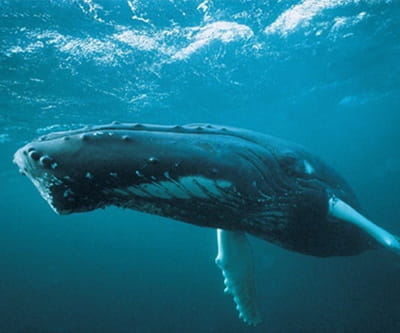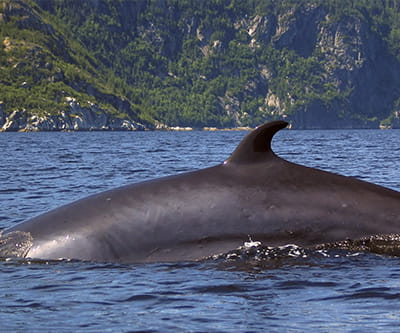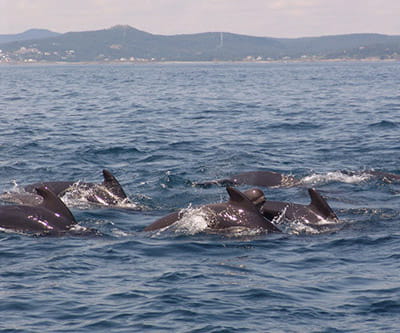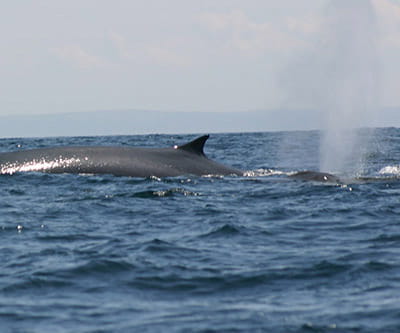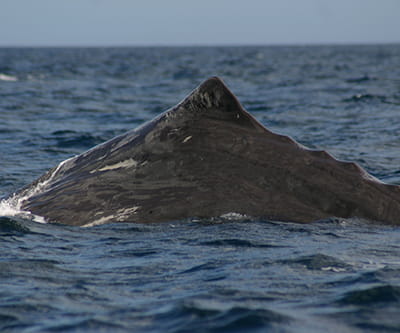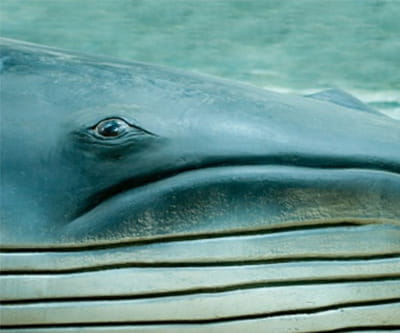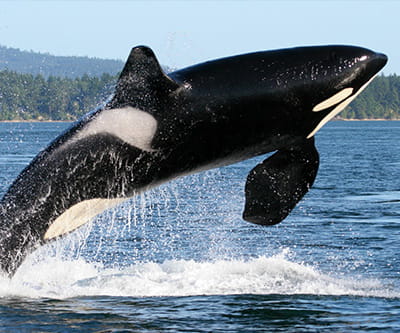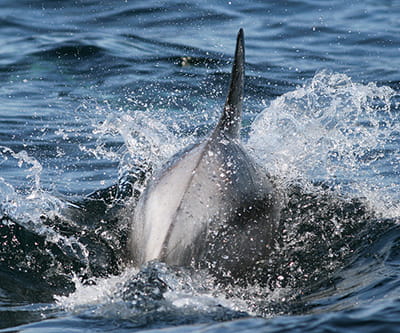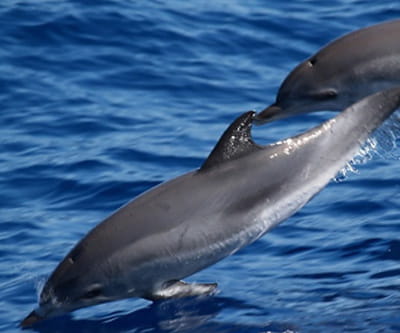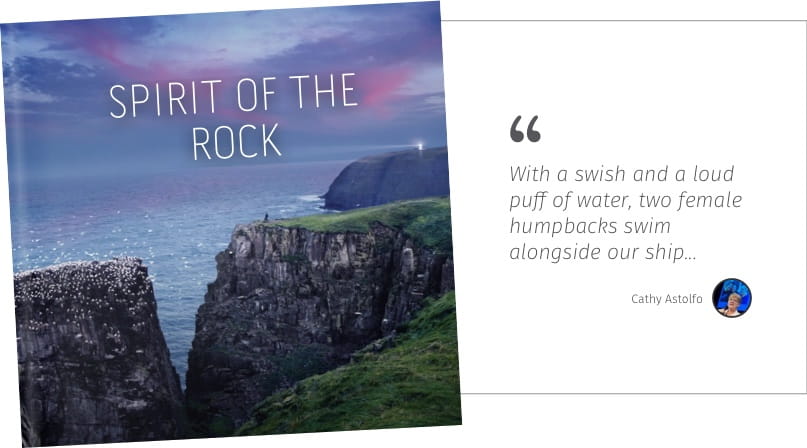Experience Whale Watching
Learn More-
They pass through here every year, ten thousand of them.
- Ways to Watch
- Whale Species
- Icebergs, Whales & Birds – The Triple Play!
- Plan & Book
Newfoundland and Labrador is one of the most spectacular whale watching places on Earth. The world's largest population of humpback whales returns each year between May and September, and you can see them feed, frolic, and even breach near our shores. Catching a single glimpse of these majestic mammals is a memorable experience, whether it's from the deck of a tour boat, the side of your sea kayak, or a seaside trail.
But don’t just take our word for it. Take a closer look with Seamus and see for yourself.
Discover Ways to Watch
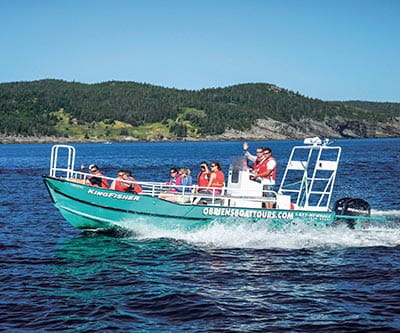
Boat
What better way to see a whale than to meet one – or more – at sea? Our boat tour operators allow you to do just that, and they know exactly where to find them. It's not uncommon for a whale or porpoise to investigate a visiting boat. Sometimes, you can look over the railing and see one – many metres in length – swimming gracefully under your vessel.
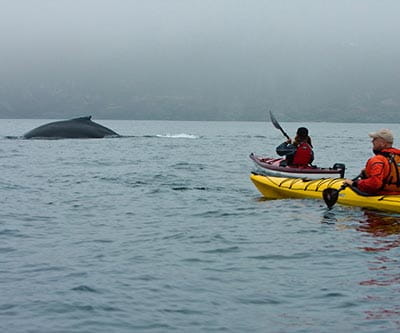
Sea Kayak
A sea kayak tour offers an up-close and intimate experience. Our ocean kayaking operators will take you as close as safely possible to whales, caves, inlets and, if the timing is just right, you might see icebergs as well.
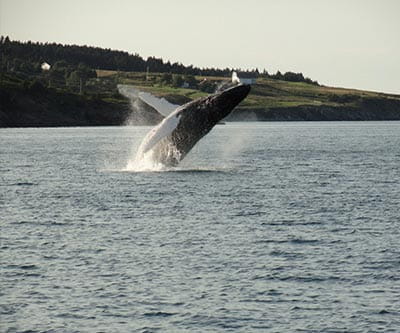
Land
If you haven’t found your sea legs, you can spot whales while hiking or walking along seaside trails, rugged cliffs, and sandy beaches. Look out from a cliff-side peak and see the tails of humpbacks splashing in the sea. Or picnic alongside the ocean and get a fine view of whales and porpoises swimming nearby – no binoculars needed.
Whales can be seen in all bays along the coastline. Some spectacular viewing sites are Signal Hill, Cape Spear, Trinity, Cape Bonavista, Twillingate, White Bay, Strait of Belle Isle, St. Vincent's, Cape St. Mary's, Cape Race, Witless Bay, and St. Anthony.
Visit Our Hot Spots
Explore Whale Species
Discover Icebergs, Whales & Birds – The Triple Play!
We’re one of the few places in the world to receive simultaneous visits from whales, seabirds, and icebergs. As the whales and birds migrate north and the icebergs sail south, there’s a chance to experience all three of these wonderful sights in one trip. Like so much in nature, there are many factors that vary from year to year, but with luck you’ll witness this exciting spectacle.
View or download our Whales, Seabirds & Icebergs map.
The View From Here
-
Image Caption 1
-
Image Caption 1
-
Image Caption 1
-
Image Caption 1
-
Image Caption 1
-
Image Caption 1
-
Image Caption 1
-
Image Caption 1
-
Image Caption 1
-
Image Caption 1
Videos far, far off the beaten path
Picture Yourself Here #ExploreNL
